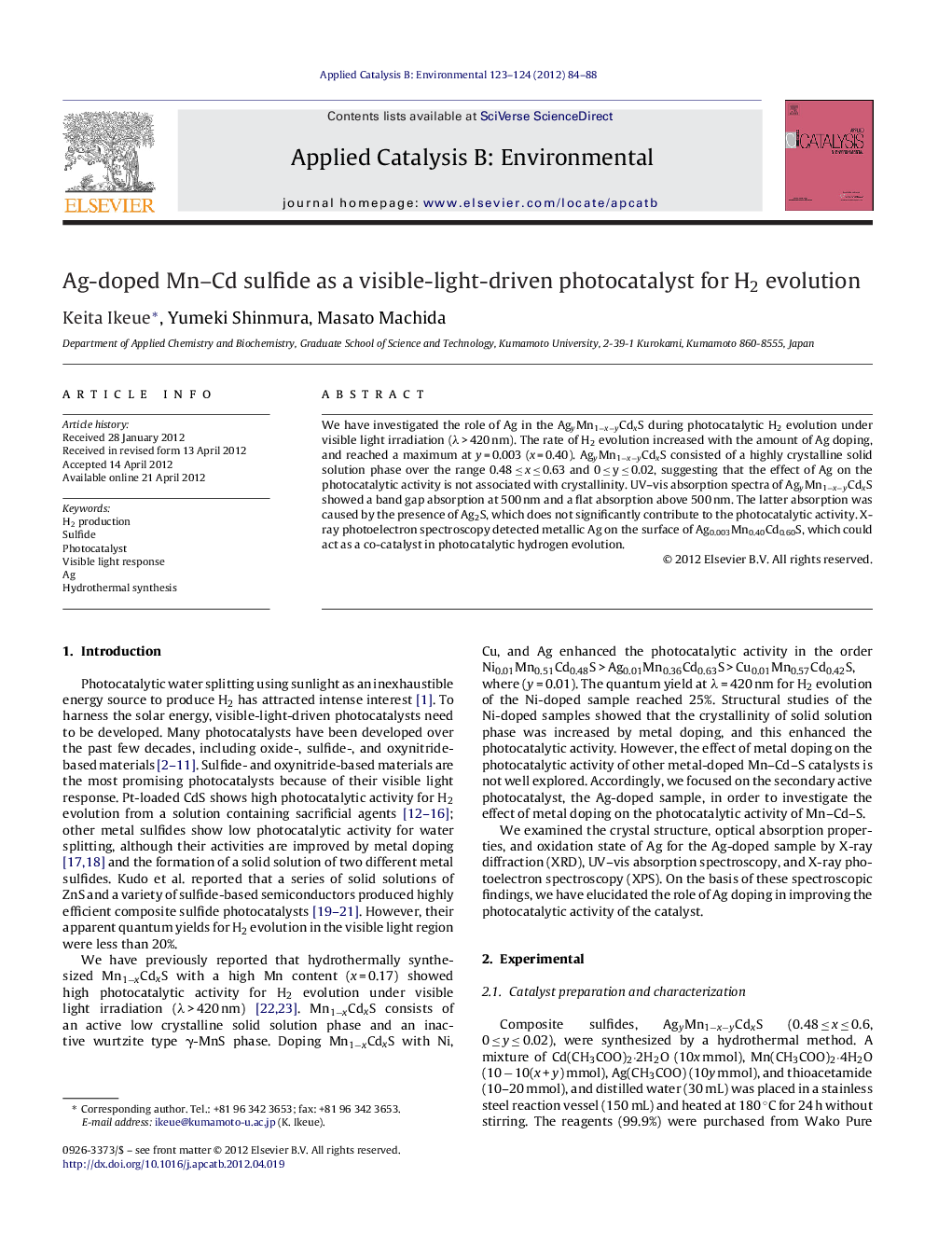| Article ID | Journal | Published Year | Pages | File Type |
|---|---|---|---|---|
| 46125 | Applied Catalysis B: Environmental | 2012 | 5 Pages |
We have investigated the role of Ag in the AgyMn1−x−yCdxS during photocatalytic H2 evolution under visible light irradiation (λ > 420 nm). The rate of H2 evolution increased with the amount of Ag doping, and reached a maximum at y = 0.003 (x = 0.40). AgyMn1−x−yCdxS consisted of a highly crystalline solid solution phase over the range 0.48 ≤ x ≤ 0.63 and 0 ≤ y ≤ 0.02, suggesting that the effect of Ag on the photocatalytic activity is not associated with crystallinity. UV–vis absorption spectra of AgyMn1−x−yCdxS showed a band gap absorption at 500 nm and a flat absorption above 500 nm. The latter absorption was caused by the presence of Ag2S, which does not significantly contribute to the photocatalytic activity. X-ray photoelectron spectroscopy detected metallic Ag on the surface of Ag0.003Mn0.40Cd0.60S, which could act as a co-catalyst in photocatalytic hydrogen evolution.
Graphical abstractFigure optionsDownload full-size imageDownload as PowerPoint slideHighlights▸ The photocatalytic activity of Mn–Cd sulfides was markedly improved by Ag doping. ▸ Metallic Ag was deposited on the Mn–Cd sulfide surface during the hydrothermal reaction. ▸ Metallic Ag on Ag-doped Mn–Cd sulfide could act as co-catalyst for photocatalytic hydrogen evolution.
